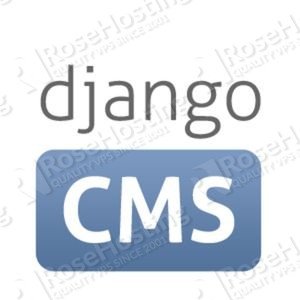
Django CMS is open source content management system based on the Web framework Django. Some of the main features include: Plugin-based, Pretty URLs, Permission management, Apps, Frontend-Editing, Analytics, Blog ..etc.
The following command will install all necessary packages
apt-get update apt-get install -y python-software-properties python python-dev
Install the the latest version of Nginx
add-apt-repository ppa:nginx/stable apt-get update && sudo apt-get install nginx
Install MariaDB and create a database.
apt-key adv --recv-keys --keyserver hkp://keyserver.ubuntu.com:80 0xcbcb082a1bb943db add-apt-repository 'deb http://ftp.osuosl.org/pub/mariadb/repo/5.5/ubuntu precise main' apt-get update echo -e "Package: *\nPin: origin ftp.osuosl.org\nPin-Priority: 1000" | tee /etc/apt/preferences.d/mariadb apt-get install mariadb-server libmariadbclient-dev
mysql -uroot -p MariaDB [(none)]> CREATE DATABASE dcms; MariaDB [(none)]> GRANT ALL PRIVILEGES ON dcms.* TO 'dcmsuser'@'localhost' IDENTIFIED BY 'pa33W0rd'; MariaDB [(none)]> FLUSH PRIVILEGES; MariaDB [(none)]> \q
Install pip
curl https://raw.github.com/pypa/pip/master/contrib/get-pip.py | python -
Create a virtualenv using pip
sudo pip install --upgrade virtualenv mkdir -p ~/.virtualenvs/djangocms virtualenv ~/.virtualenvs/djangocms source ~/.virtualenvs/djangocms/bin/activate
Create a requirements.txt file with the following content
# Bare minimum django-cms==2.4.1 #These dependencies are brought in by django-cms, but if you want to lock-in their version, specify them Django==1.5.1 django-classy-tags==0.4 South==0.8.1 html5lib==1.0b1 django-mptt==0.5.2 django-sekizai==0.7 six==1.3.0 mysql-python==1.2.5 #Optional, recommended packages Pillow==2.0.0 django-filer==0.9.4 cmsplugin-filer==0.9.5 django-reversion==1.7
Install django CMS
pip install --upgrade --download-cache=~/.pip-cache -r requirements.txt
Create your django CMS project
mkdir ~/projects cd ~/projects django-admin.py startproject mynewproject
Open the file ~/projects/mynewproject/mynewproject/settings.py and add the following at the top of the file:
# -*- coding: utf-8 -*- import os gettext = lambda s: s PROJECT_PATH = os.path.split(os.path.abspath(os.path.dirname(__file__)))[0]
Add your database details:
DATABASES = {
'default': {
'ENGINE': 'django.db.backends.mysql',
'NAME': 'dcms',
'USER': 'dcms',
'PASSWORD': 'pa33W0rd',
'HOST': '',
'PORT': '',
}
}
Add the following apps to the INSTALLED_APPS.
'django.contrib.admin',
INSTALLED_APPS = (
'django.contrib.auth',
'django.contrib.contenttypes',
'django.contrib.sessions',
'django.contrib.sites',
'django.contrib.messages',
'django.contrib.staticfiles',
'django.contrib.admin',
'django.contrib.admindocs',
'cms',
'mptt',
'menus',
'south',
'sekizai'
)
Add the following lines to the MIDDLEWARE_CLASSES list.
MIDDLEWARE_CLASSES = (
'django.middleware.common.CommonMiddleware',
'django.contrib.sessions.middleware.SessionMiddleware',
'django.middleware.csrf.CsrfViewMiddleware',
'django.contrib.auth.middleware.AuthenticationMiddleware',
'django.contrib.messages.middleware.MessageMiddleware',
# Uncomment the next line for simple clickjacking protection:
# 'django.middleware.clickjacking.XFrameOptionsMiddleware',
'cms.middleware.page.CurrentPageMiddleware',
'cms.middleware.user.CurrentUserMiddleware',
'cms.middleware.toolbar.ToolbarMiddleware',
'cms.middleware.language.LanguageCookieMiddleware',
)
Add the following at the end of the file:
TEMPLATE_CONTEXT_PROCESSORS = (
'django.contrib.auth.context_processors.auth',
'django.core.context_processors.i18n',
'django.core.context_processors.request',
'django.core.context_processors.media',
'django.core.context_processors.static',
'cms.context_processors.media',
'sekizai.context_processors.sekizai',
)
Change STATIC_ROOT and MEDIA_ROOT directives to:
STATIC_ROOT = os.path.join(PROJECT_PATH, "static") STATIC_URL = "/static/" MEDIA_ROOT = os.path.join(PROJECT_PATH, "media") MEDIA_URL = "/media/"
Modify the TEMPLATE_DIRS directive:
TEMPLATE_DIRS = (
# The docs say it should be absolute path: PROJECT_PATH is precisely one.
# Life is wonderful!
os.path.join(PROJECT_PATH, "templates"),
)
Add at least one template to CMS_TEMPLATES
CMS_TEMPLATES = (
('template_1.html', 'Template One'),
('template_2.html', 'Template Two'),
)
Limit to English
LANGUAGES = [
('en', 'English'),
]
Finally save the settings.py file.
Define routes for our project
Open mynewproject/mynewproject/urls.py file and replace the content with the following
from django.conf.urls.defaults import *
from django.conf.urls.i18n import i18n_patterns
from django.contrib import admin
from django.conf import settings
admin.autodiscover()
urlpatterns = patterns('',
url(r'^admin/', include(admin.site.urls)),
url(r'^', include('cms.urls')),
)
if settings.DEBUG:
urlpatterns = patterns('',
url(r'^media/(?P<path>.*)$', 'django.views.static.serve',
{'document_root': settings.MEDIA_ROOT, 'show_indexes': True}),
url(r'', include('django.contrib.staticfiles.urls')),
) + urlpatterns
Create templates
Create a new directory templates
mkdir ~/projects/mynewproject/templates
Open your favorite editor and create the following files:
base.html
{% load cms_tags sekizai_tags %}
<html>
<head>
{% render_block "css" %}
</head>
<body>
{% cms_toolbar %}
{% placeholder base_content %}
{% block base_content %}{% endblock %}
{% render_block "js" %}
</body>
</html>
template_1.html
{% extends "base.html" %}
{% load cms_tags %}
{% block base_content %}
{% placeholder template_1_content %}
{% endblock %}
template_2.html
{% extends "base.html" %}
{% load cms_tags %}
{% block base_content %}
{% placeholder template_2_content %}
{% endblock %}
Initialize the database and create a new superuser
python manage.py syncdb --all python manage.py migrate --fake
Check if everything is set up correctly
python manage.py cms check
If you see “Installation okay”, it means everything is set up correctly.
Collect static files
cd ~/projects/mynewproject ./manage.py collectstatic
Install and configure gunicorn
pip install gunicorn
create a new configuration file (~/.virtualenvs/djangocms/gunicorn_config.py) as follows
command = '~/.virtualenvs/djangocms/bin/gunicorn' pythonpath = '~/projects/mynewproject' bind = '127.0.0.1:8011' workers = 3 user = nobody
Start the gunicorn with the following command:
cd ~/projects/mynewproject && gunicorn -c ~/.virtualenvs/djangocms/gunicorn_config.py mynewproject.wsgi
Configure Nginx
Create a new nginx virtual host
vim /etc/nginx/sites-available/your_domain.com
server {
listen 80;
server_name your_domain.com;
location /static/ {
alias /<your_username>/projects/mynewproject/static/;
}
location / {
proxy_pass_header Server;
proxy_set_header Host $http_host;
proxy_redirect off;
proxy_set_header X-Real-IP $remote_addr;
proxy_set_header X-Scheme $scheme;
proxy_connect_timeout 10;
proxy_read_timeout 10;
proxy_pass http://localhost:8011/;
}
}
ln -s /etc/nginx/sites-available/your_domain.com /etc/nginx/sites-enabled/your_domain.com
/etc/init.d/nginx restart
That’s it. Now open your browser and navigate to your domain.
For more info about the Django CMS please go to: http://docs.django-cms.org/
Of course you don’t have to do any of this if you use one of our Linux VPS Hosting services, in which case you can simply ask our expert Linux admins to install this for you. They are available 24×7 and will take care of your request immediately.
PS. If you liked this post please share it with your friends on the social networks using the buttons on the left or simply leave a reply below. Thanks.
Hello,
Thank you for Howto.
but what is with admin panel? The admin panel come without style. Is there another folder which must be have instuction of location, root?